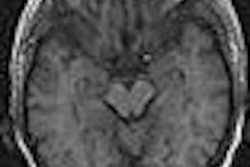There is no shortage of urban legends about disasters in MRI suites -- from the brand-new suite that couldn't actually scan patients because the MRI was vibrating too much, to multimodality suites where magnetic fringe fields incapacitated PET/CT machines. With millions of dollars of equipment on the line, in addition to the health of patients and staff, how do you know that your next renovation, expansion, or new imaging suite is being handled by designers who know how to protect your investment and your patients?
We wish it were as easy as having the label "healthcare architect." The fact is that healthcare today involves so many highly technical specialties, and it is profoundly difficult to be a true expert in the planning and design of more than a handful of areas within a hospital.
With the typical installation drawings that you can download from vendors' Web sites, a complete novice can produce architectural drawings that appear to be the product of a knowledgeable designer. So if neither titles nor portfolio provides any real measure of your architects' skill in designing MRI suites, what does?
Unfortunately, administrators have had to fall back on the "buyer beware" premise. Hospitals and imaging facilities have had to reinvent their selection process to choose architects and engineers for MRI projects -- until now.
While they reveal nothing about a firm's aesthetic or working styles, or the personalities of its key players (all factors that are important to the overall decision), the 10 questions below can help you assess the design team's grasp of the overarching planning, design, and safety principles, as well as their command of technical issues unique to MRI and multimodal imaging facilities.
These 10 questions are by no means exhaustive, but they are a useful barometer of the expertise of your design team.
For each of these inquiries, your designers should be able to answer the question on the spot. These are not research topics for which they should need to go back and read vendor information and look up templates.
A designer who can't address these issues right when you ask them may still be an excellent architect, but they're not the expert you want to oversee your MRI project.
- Explain the zones and functions in the American College of Radiology (ACR) four-zone model.
- What way should the door to the magnet room swing, in toward or away from the magnet room?
- What does radiofrequency (RF) shielding do for the MRI's magnetic field?
- Are there any siting issues with CT, PET, or nuclear medicine relative to MRI?
- What are the causes and effects of magnetic contamination?
- Apart from the MRI unit, what should the technologist be able to see from the console?
- What HIPAA concerns are involved in MRI suite design?
- If I decide to trade out my 1.5-tesla magnet with a 3-tesla magnet, is there anything I will need to re-evaluate?
- What siting and planning concerns are involved in active-shielding failure?
- Are there any design consequences if we want to start performing MR-guided biopsies or other interventional procedures?
Certainly, intelligent architects and engineers can disagree on the best way to tackle any given problem. But all good designers should present all sides of each issue to their client so that, collectively, they can make an informed decision.
Designers who dodge any question, insist that the issue is really addressed by the vendor, or attempt to trump any verification of their expertise with the "We've done 12 MRI suites just like this" evasion aren't listening to your concerns and responding with substantive answers. Isn't this at the heart of what you hire professionals to do -- listen and respond with their expertise?
Being unfamiliar with these technical issues does not mean that an architect is not a good fit with you and your facility, although it probably means that they could benefit (and you will certainly benefit) from some expert advice. If you have any question as to a design team's ability to address the technical issues, insist that they bring on an expert in MRI facility planning, design, and construction.
In part two, we will share with you abbreviated answers to each of the 10 questions. Our responses aren't all-encompassing, but they are a useful yardstick when evaluating other answers. When you have millions of dollars of equipment and the health and safety of your patients in the balance, isn't it worth 10 questions to help determine if your faith is being placed in the right hands?
By Robert Junk and Tobias Gilk
AuntMinnie.com contributing writers
April 5, 2005
Join us on Thursday for Part II: Answers to the 10 questions to ask your architect about MRI suite design.
Reprinted from www.mri-planning.com by permission of the authors. If you would like more information on any aspect of MR facility design or safety, please contact Robert Junk or Tobias Gilk at Jünk Architects.
Related Reading
The 3-tesla MRI swap: Why it's not a simple upgrade, January 27, 2005
Chilled loop failure: How to break your magnet without even trying, December 8, 2004
HIPAA compliance strategies for MR control rooms, October 26, 2004
The fire extinguisher in your MRI suite: will it save a life or take one? September 22, 2004
What your vendor may not have told you about magnetic contamination, July 27, 2004
Copyright © 2005 Jünk Architects, PC



















